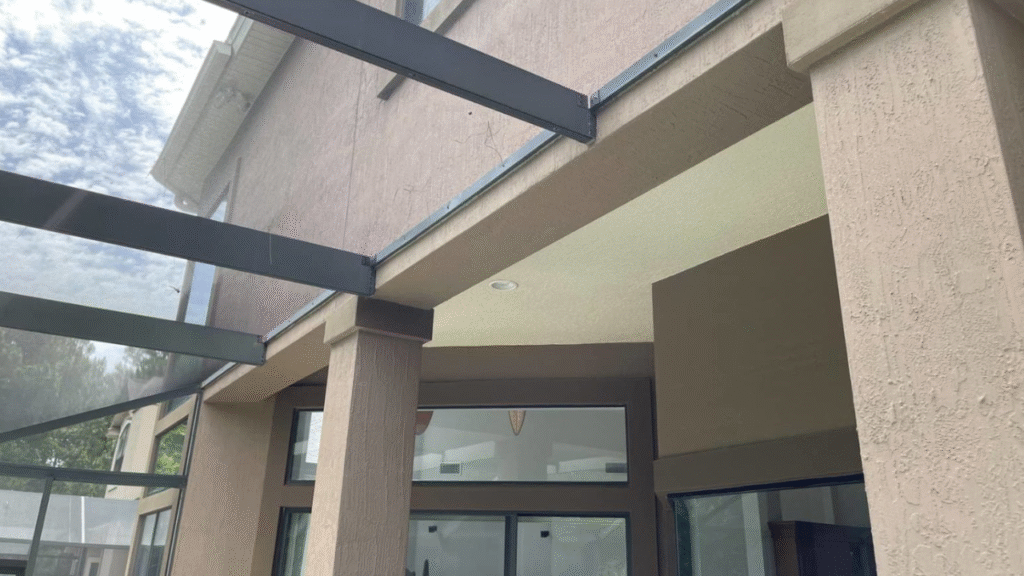Moisture remains one of architecture’s most relentless enemies, silently compromising structural integrity from within. Amid sophisticated waterproofing systems and high-performance cladding, a modest yet indispensable guardian stands sentinel at the base of your walls: weep screed. This corrosion-resistant strip is the unsung hero preserving buildings from decay. Join us as we dissect how this critical component shields structures—from coastal homes to urban high-rises—against water’s insidious damage.
What Exactly Is a Weep Screed?
A weep screed is a corrosion-resistant, L-shaped profile installed horizontally along the bottom of exterior wall assemblies. Its design includes:
- A vertical flange embedded behind stucco, EIFS, or siding
- A sloping horizontal leg that directs water away from the foundation
- Pre-punched holes (weep holes) every 6–12 inches
Common Materials:
- Galvanized Steel: For high-strength applications
- PVC/Vinyl: Ideal for coastal regions (salt-resistant)
- Aluminum: Lightweight option for residential use
Fun fact: The term “weep” refers to its function—allowing walls to “weep” trapped moisture.
The Science of Moisture Management: How Weep Screed Works
Water infiltrates walls through:
- Wind-driven rain
- Capillary action
- Condensation within cavities
Here’s where weep screed shines:
- Drains Liquid Moisture: Collects water vapor or leaks in the cavity, channeling it outward.
- Creates a Capillary Break: Prevents wicking from damp foundations.
- Provides Ventilation: Weep holes enable air circulation to dry wall cavities.
- Separates Cladding from Foundations: Acts as a bond-breaker for stucco.
Without it, moisture pools at the base—rotting framing, corroding fasteners, and fueling toxic mold.
Building Codes: When Is Weep Screed Non-Negotiable?
International codes mandate weep screeds where water-resistive barriers (WRBs) are used:
- IRC Section R703.8: Requires drainage for stucco walls
- IBC Section 1403.2: Specifies flashing at wall bases
- Regional Amendments: Florida (HVHZ), California, and hurricane-prone areas enforce stricter weep hole spacing
Case Study: After Miami’s 2017 hurricane surge, 83% of flood-damaged homes lacked compliant weep screeds.
Installation Best Practices: Doing It Right
Step-by-Step Guide:
- Position: Install 2–4 inches above finished grade (prevents splashback).
- Integrate Flashing: Overlap with foundation flashing by 6 inches.
- Seal Joints: Use liquid-applied sealant at seams.
- Protect Weep Holes: Install mesh tape to prevent clogging.
Critical Mistakes to Avoid:
- Burying screed below soil/landscaping
- Sealing weep holes with sealant (defeats the purpose!)
- Using incompatible materials (e.g., steel screed with cedar siding)
Material Comparison: Choosing the Right Weep Screed
| Material | Best For | Lifespan | Cost |
|---|---|---|---|
| Galvanized Steel | High-load structures | 50+ years | $$$ |
| PVC/Vinyl | Coastal zones | 30+ years | $$ |
| Aluminum | Residential stucco | 25+ years | $ |
Pro Tip: In freeze-thaw zones, avoid PVC—it becomes brittle below 20°F.
Real-World Impact: Case Studies
Success Story: A Seattle condo complex (2019) reduced moisture-related warranty calls by 70% after retrofitting PVC weep screeds over concrete substrates.
Failure Analysis: A historic Arizona adobe home omitted weep screeds during stucco restoration. Within 18 months:
- Efflorescence bloomed on lower walls
- Sill plates rotted due to trapped groundwater
- Repair costs exceeded $120K
Myths Debunked
- “Only Wet Climates Need Them”: False! Dry regions experience condensation and irrigation splash.
- “Flashing Replaces Weep Screed”: Flashing directs water; screeds drain it.
- “Vinyl Siding Doesn’t Require It”: All WEB-based systems need drainage.
- “Retrofitting Is Impossible”: Existing walls can add screeds via partial disassembly.
- “More Weep Holes = Better”: Uncontrolled holes invite pests—follow code spacing.
Why This Small Investment Pays Off
Installing weep screed costs $0.50–$1.50 per linear foot but delivers:
- 40% longer cladding lifespan (Per Building Science Corp studies)
- Compliance with building codes and warranties
- Prevention of $10,000+ structural repairs
- Healthier indoor air quality (no mold spores)
Conclusion: Building Smarter, Not Harder
Weep screed isn’t just code compliance—it’s responsible design. By giving moisture an escape route, this tiny detail preserves structural integrity, slashes maintenance costs, and protects occupants. Whether you’re drafting blueprints or choosing materials, prioritize drainage as fiercely as aesthetics. After all, the driest buildings stand the longest.
FAQs About Weep Screed
Q: Can I install a weep screed over brick?
A: No—use mortar netting instead. Weep screed are for continuous cladding (stucco, EIFS, fiber cement).
Q: How far above concrete should it sit?
A: Minimum 2 inches to avoid wicking.
Q: Does vinyl siding need weep screed?
A: Yes—integrate it with the drainage plane behind the siding.
Q: Can insects enter through weep holes?
A: Use corrosion-resistant mesh inserts to block pests.
Q: Is it required for interior walls?
A: Only in steam rooms or showers (with specialized profiles).



